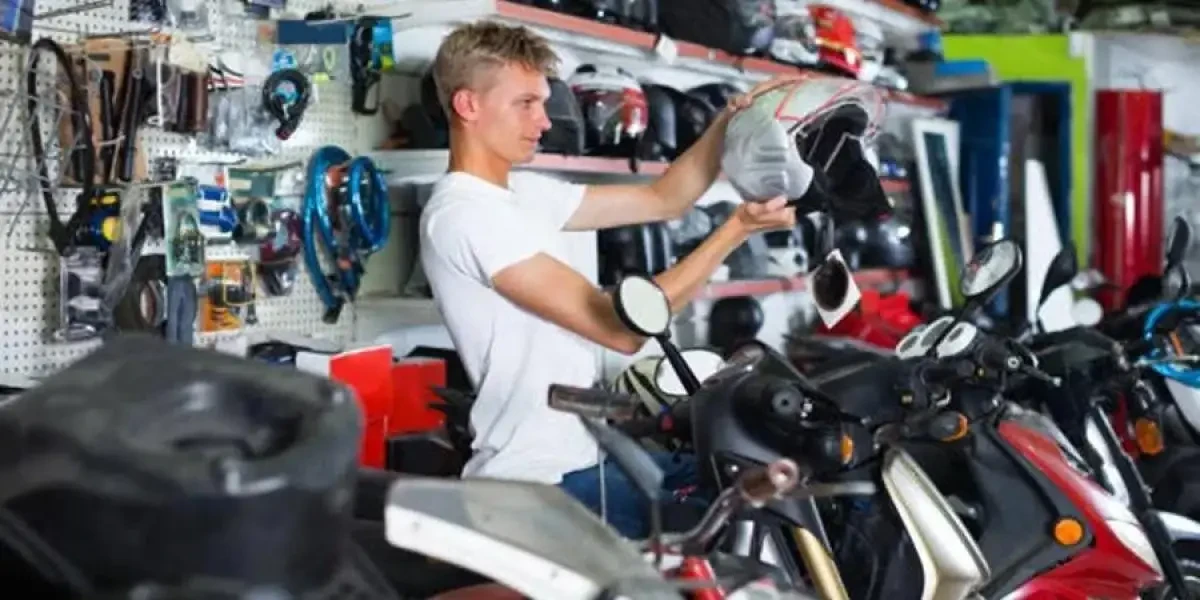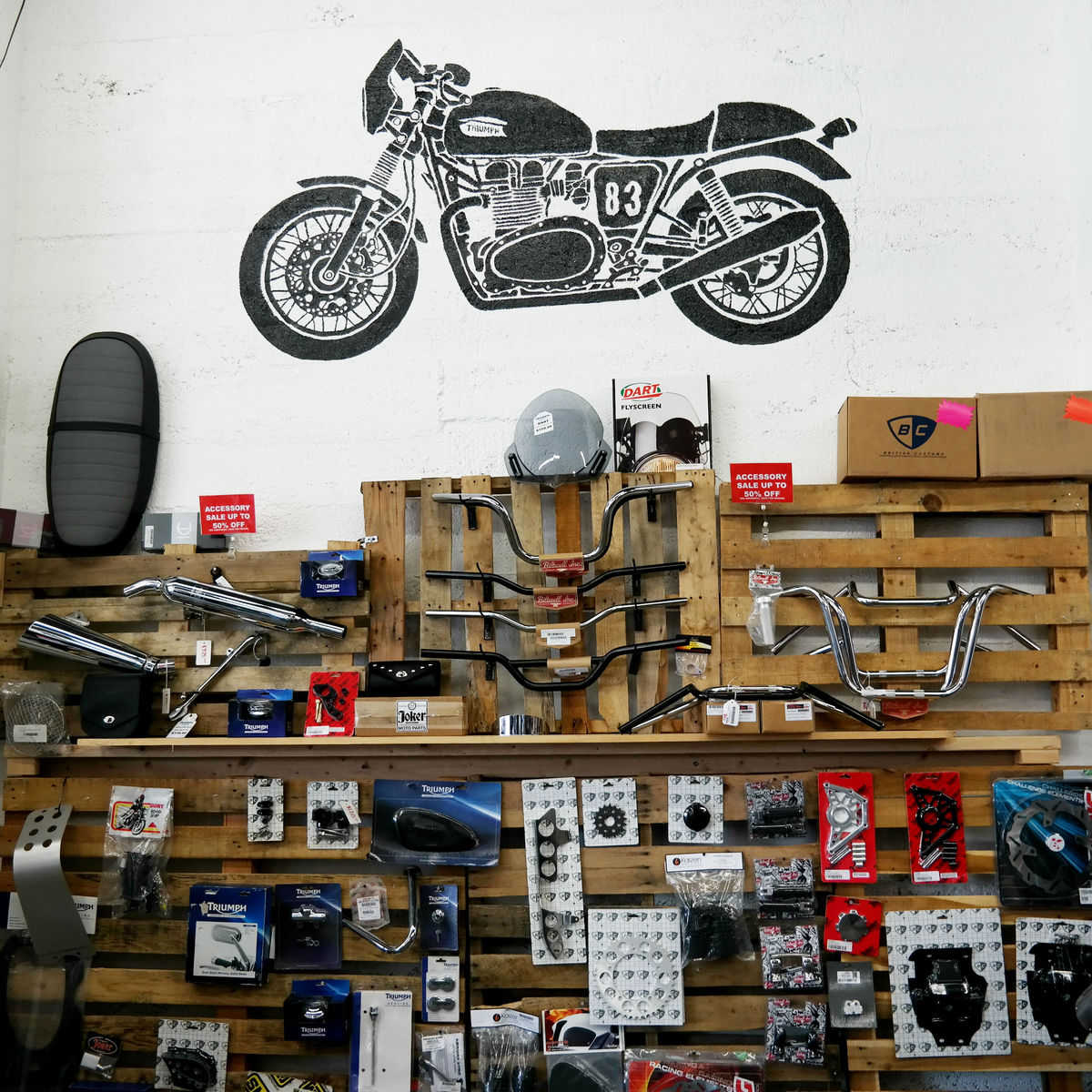Check Out the most up to date Motocross Gear NZ for every single Degree of Rider
Check Out the most up to date Motocross Gear NZ for every single Degree of Rider
Blog Article
Recognizing the Necessary Parts of a Motorcycle: A Comprehensive Overview for Lovers
For motorbike lovers looking to boost their riding experience and ensure their bikes run smoothly, recognizing the vital elements of a motorbike is paramount. Each aspect, from the engine's elaborate functions to the vital role of the stopping mechanisms, not just affects efficiency however also safety and security and comfort.
Engine Components

The camshaft plays an important role in managing the timing of the engine's valves, making certain the precise opening and closing required for efficient gas and air consumption, in addition to exhaust expulsion. This timing is critical to maintaining optimum engine efficiency and efficiency. In addition, the carburetor or fuel shot system, relying on the motorbike model, is responsible for mixing air with fuel in the correct proportion for combustion.
The air conditioning system, either air or liquid-based, works to maintain the engine's temperature within operational limits, stopping getting too hot and making certain long life - mx parts nz. Each component, carefully developed and integrated, contributes to the smooth procedure of the engine, specifying the motorcycle's power outcome and total efficiency
Transmission System
Essential to the motorcycle's capability, the transmission system makes certain reliable power transfer from the engine to the wheels. This system consists of numerous vital parts, consisting of the clutch, gearbox, and last drive, each playing a crucial function in converting the engine's power right into activity. The clutch, commonly run by a hand lever, serves to disengage the engine and engage from the transmission, permitting smooth gear modifications and controlled acceleration.
The transmission, often described as the transmission proper, consists of a collection of gears that bikers can manually move through to adjust the bike's speed and torque output. These gears are prepared in a sequence that allows the motorcycle to accelerate smoothly and maintain optimum engine performance throughout different rates. The majority of motorbikes make use of a sequential gearbox, calling for the motorcyclist to shift equipments in an established order.
Braking Mechanisms
While recognizing the transmission system is crucial to using a motorbike's power, similarly essential is the capability to control and quit that power properly, which is where braking devices come right into play. Brakes are crucial for security and performance, offering the biker with the needed control to navigate various surfaces and conditions. Typically, motorcycles include two kinds of stopping systems: disc brakes and drum brakes.
Disc brakes are a lot more widespread in modern-day motorbikes due to their exceptional efficiency. This system supplies better warm dissipation, consistent efficiency, and enhanced stopping power, especially in wet conditions.
Conversely, drum brakes, though less usual, are still discovered look at more info in some bikes. They function by pressing brake shoes against the internal surface of a drum connected to the wheel. While normally less reliable in warm dissipation and stopping power, drum brakes are less complex and a lot more economical.
Comprehending these braking systems' subtleties allows riders to maintain their motorbikes appropriately and appreciate the engineering that guarantees effective and secure stopping.
Suspension and Steering
Suspension and steering systems are crucial elements that substantially affect a motorcycle's handling and experience convenience. The suspension system, containing forks at the front and shock absorbers at the back, soaks up road irregularities, boosting stability and control. Front forks, upside down or usually telescopic, compress and rebound to alleviate influences, while back shock absorbers preserve tire contact with the road, critical for traction and safety.
Guiding, centered around the handlebars, links the motorcyclist to the bike's directional control. The guiding head bearings ensure smooth procedure, allowing exact ability to move. Correct alignment and maintenance of these bearings are essential for foreseeable steering response and decreasing cyclist fatigue.
The suspension's adjustability is one more important element; preload, damping, and rebound setups enable customization to suit numerous riding designs and conditions. This adaptability is necessary for maximizing performance, whether navigating urban roads or taking on sturdy trails. Advancements like electronic suspension systems provide real-time changes, boosting trip top quality throughout diverse terrains.

Electric Solutions
After ensuring a smooth and controlled trip via efficient suspension and steering systems, focus transforms to the electrical systems, a pivotal facet of modern-day motorbikes. These systems play a critical duty not just in starting the engine but likewise in powering different elements that boost the capability and safety and security of the bike.
At the heart of a motorbike's electrical system is the battery, which stores electric power needed for starting the engine and powering auxiliary systems - mx parts nz. The generator or generator, coupled with the rectifier-regulator, makes sure the battery stays billed while the motorbike is in operation, transforming mechanical power into electrical power and maintaining voltage degrees
The ignition system, an additional crucial component, is accountable for stiring up the air-fuel mixture in the engine's cylinders. Modern bikes often use a digital image source ignition system, offering greater efficiency and integrity compared to typical systems.
Lights systems, including headlights, tail lights, and indications, are likewise essential, guaranteeing exposure and safety and security for the cyclist. Additional digital parts such as sensing units, control systems, and shows add to advanced features like gas injection management, anti-lock stopping systems (ABDOMINAL MUSCLE), and electronic control panels, additionally enhancing the riding visit their website experience.
Final Thought
An extensive comprehension of a motorcycle's essential elements, consisting of the engine, transmission system, braking systems, suspension, steering, and electrical systems, is indispensable for fanatics aiming to enhance safety, comfort, and performance. Mastery of these elements enables educated decisions relating to upkeep and upgrades, inevitably boosting the riding experience. By integrating this expertise, motorcyclists can ensure their motorcycles operate at peak performance and integrity, thereby making best use of both satisfaction and durability of their cars.
For motorbike lovers looking to raise their riding experience and guarantee their bikes run smoothly, comprehending the vital elements of a motorbike is paramount.Indispensable to the motorcycle's functionality, the transmission system makes certain efficient power transfer from the engine to the wheels.While recognizing the transmission system is crucial to utilizing a motorbike's power, similarly vital is the ability to manage and stop that power efficiently, which is where braking mechanisms come into play. Typically, bikes include two kinds of stopping systems: disc brakes and drum brakes.
A detailed understanding of a bike's vital elements, including the engine, transmission system, braking mechanisms, suspension, guiding, and electric systems, is essential for lovers intending to enhance efficiency, comfort, and safety and security.
Report this page